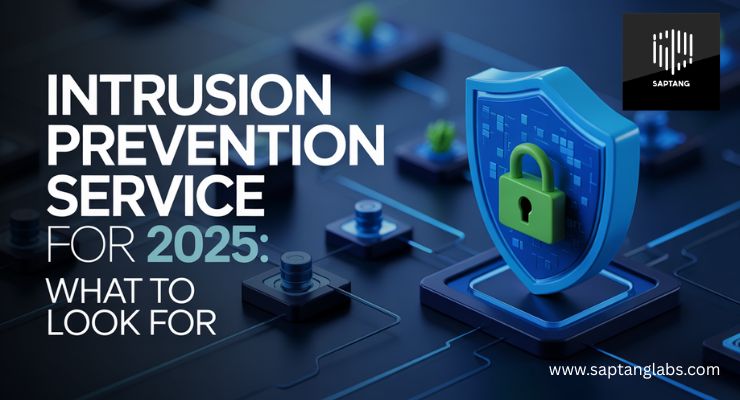In 2025, cyber threats aren’t just hitting big corporations or government agencies — they’re coming for small businesses, startups, and even individuals. From phishing emails to ransomware attacks, the methods used by attackers are getting smarter, faster, and more subtle. That’s why an Intrusion Prevention Service (IPS) isn’t just “nice to have” anymore — it’s a must.
In this article, we’ll break down what an intrusion prevention service really is, why it’s essential now more than ever, and the key things you should look for when choosing one.
What Is an Intrusion Prevention Service?
Let’s keep it simple: an intrusion prevention service is like a security guard for your computer systems, applications, and networks. It watches everything that’s happening — quietly and constantly — and steps in when it sees something suspicious.
It doesn’t just warn you about threats. It takes action. Whether that means blocking an unusual login attempt, shutting down access from a risky IP address, or preventing malicious software from spreading — a good IPS does it all in real time.
You might have heard of “Intrusion Detection Systems” (IDS), which alert you when something seems off. But an Intrusion Prevention Service goes a step further — it doesn’t just detect, it prevents the problem before damage is done.
Why You Need an IPS in 2025
The digital landscape has changed. Hackers are using artificial intelligence, social engineering, and automation to launch attacks that bypass traditional antivirus and firewall systems.
Here’s the reality:
- A phishing email can now look exactly like a message from your bank.
- Malware can slip in through software updates.
- One compromised password can lead to a full network breach.
And it’s not just about losing data. It’s about losing trust — with your customers, your partners, and your employees. A data breach can also mean heavy fines, downtime, and lost business.
For smaller companies or teams without full-time IT staff, an IPS acts like a virtual security expert — watching over your systems 24/7, even when you’re offline.
Key Features to Look For in an Intrusion Prevention Service
Choosing the right IPS means more than picking the most expensive or most popular option. Look for these features:
🔹 Real-Time Monitoring and Response
Time is everything when it comes to stopping a threat. Your IPS should monitor your systems in real time and act instantly — without waiting for someone to hit a button. The faster the response, the less damage you’ll face.
🔹 Behavioral Analysis
Modern IPS tools go beyond known threats. They can learn what’s “normal” in your system — how your team works, what files are accessed often, which devices log in — and alert you when something doesn’t fit the pattern. This helps catch new or unknown attacks early.
🔹 Easy Integration
Your IPS shouldn’t be a burden on your IT team. It should work smoothly with your existing tools — whether that’s your firewall, cloud storage, or antivirus software. The goal is to strengthen your current setup, not replace it entirely.
🔹 Clear Alerts and Reports
Some tools flood your inbox with alerts for every small change. That’s not helpful. Look for an IPS that allows you to customize notifications — so you hear about what matters most. Bonus points if it offers easy-to-read dashboards or summary reports for non-technical users.
🔹 Automatic Threat Updates
Cyber threats are always evolving. You need a system that updates itself regularly — without you needing to do anything. This ensures you’re protected against the latest threats, not just yesterday’s news.
Bonus Features Worth Considering
While not essential, these features can make a big difference in day-to-day use:
- Cloud-based access – Monitor and manage security even if your team works remotely
- Mobile alerts – Get notified on your phone so you can act quickly from anywhere
- User-friendly dashboard – You shouldn’t need a cybersecurity degree to understand your IPS
How to Choose the Right Provider
Marketing can make any tool look good. But here’s how to really choose the right IPS provider:
- Look for real-world customer reviews (especially recent ones)
- Ask for a demo or free trial to test ease of use
- Make sure support is reliable — because when something goes wrong, you’ll want help fast
- Don’t be swayed by features you won’t use — focus on what you need
Final Thoughts
An intrusion prevention service in 2025 isn’t just about blocking threats. It’s about being ready. Ready for smarter attacks. Ready for unexpected weaknesses. Ready to protect the trust you’ve built with your customers and partners.
Think of it as digital insurance — but one that works in real-time, around the clock, and without needing a coffee break.
So if you’re still relying on yesterday’s security tools, now’s the time to upgrade. Choose an IPS that fits your needs, acts fast, and grows with your business. Because when it comes to cybersecurity, prevention really is better than cure.


